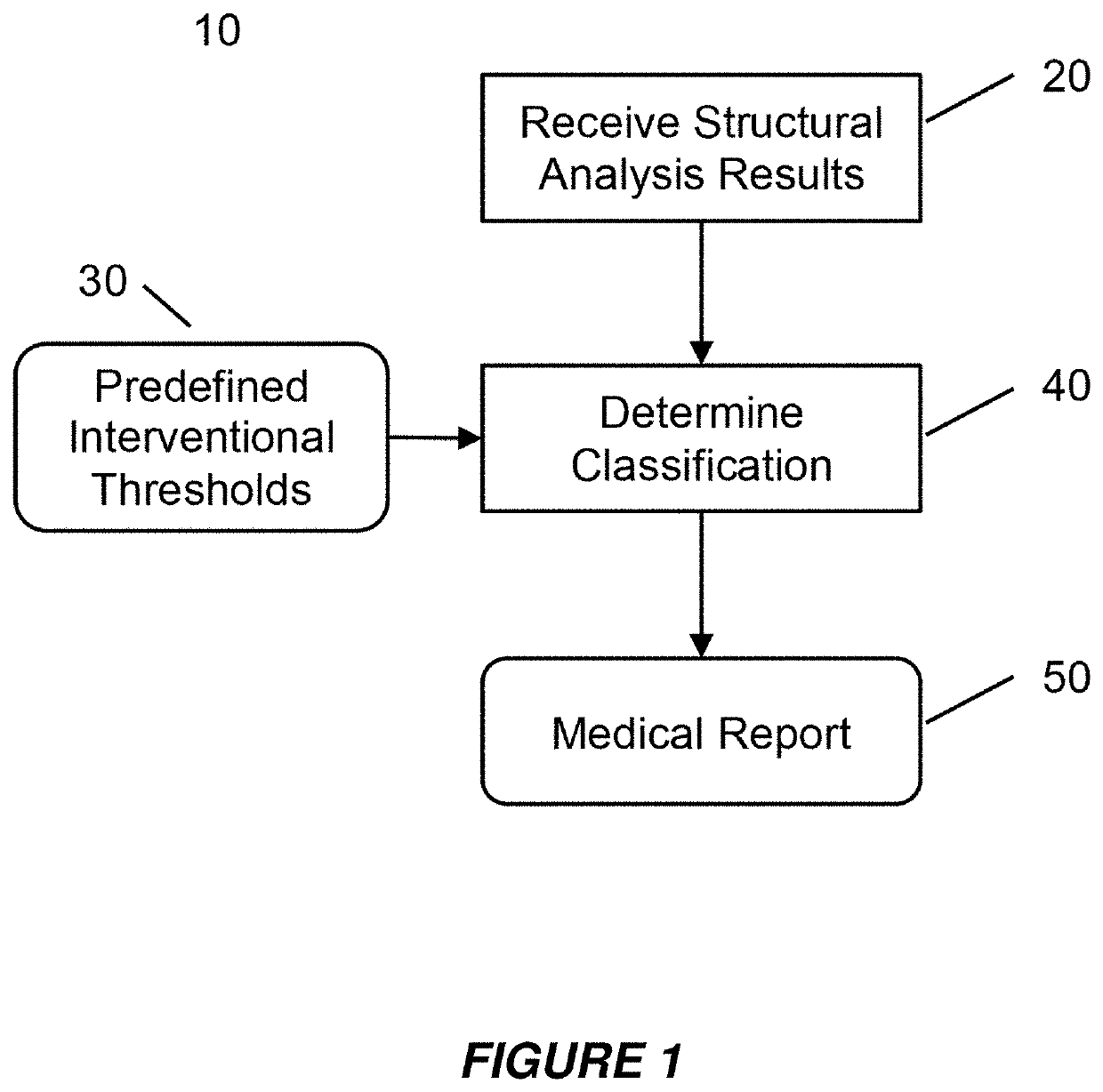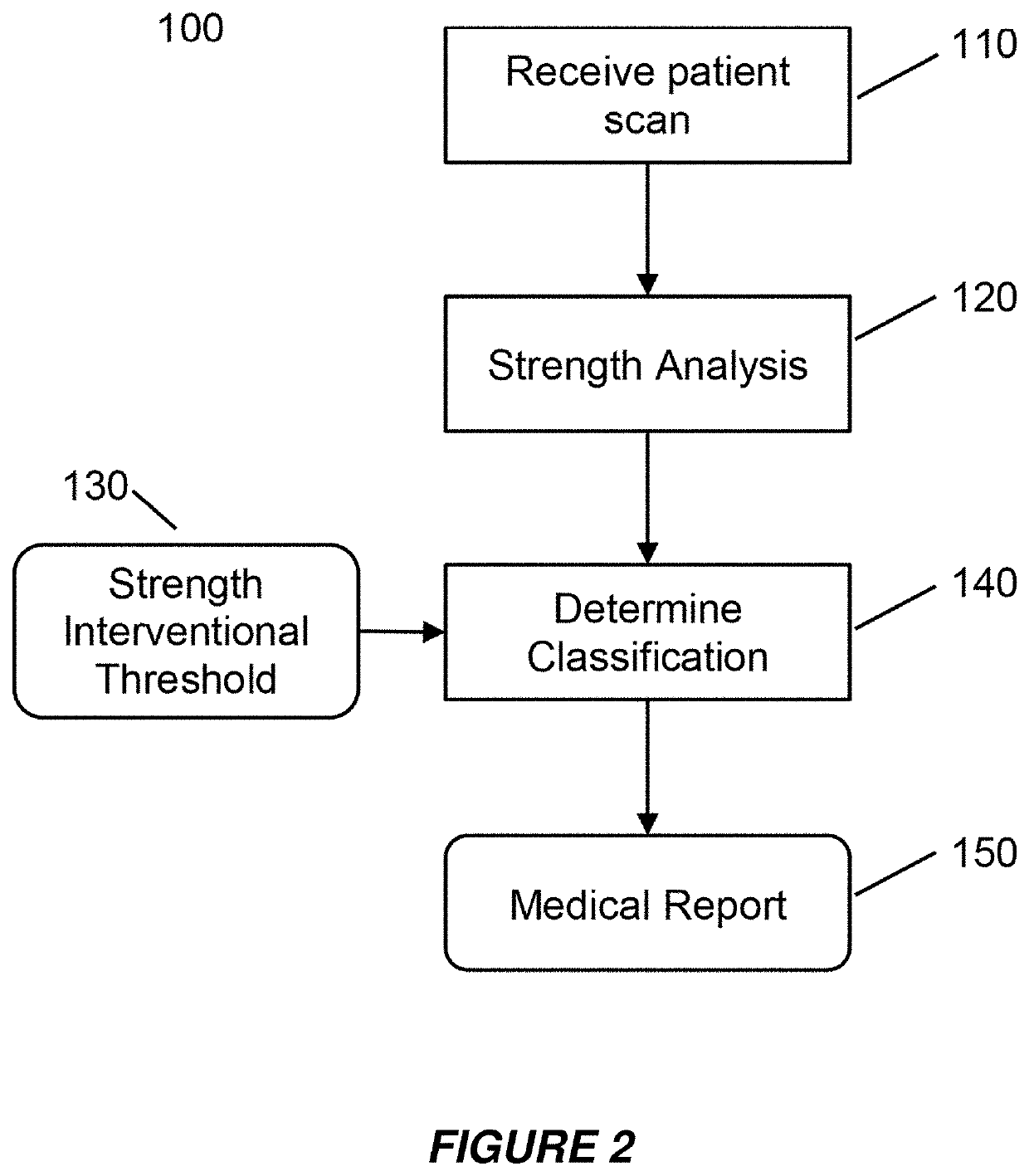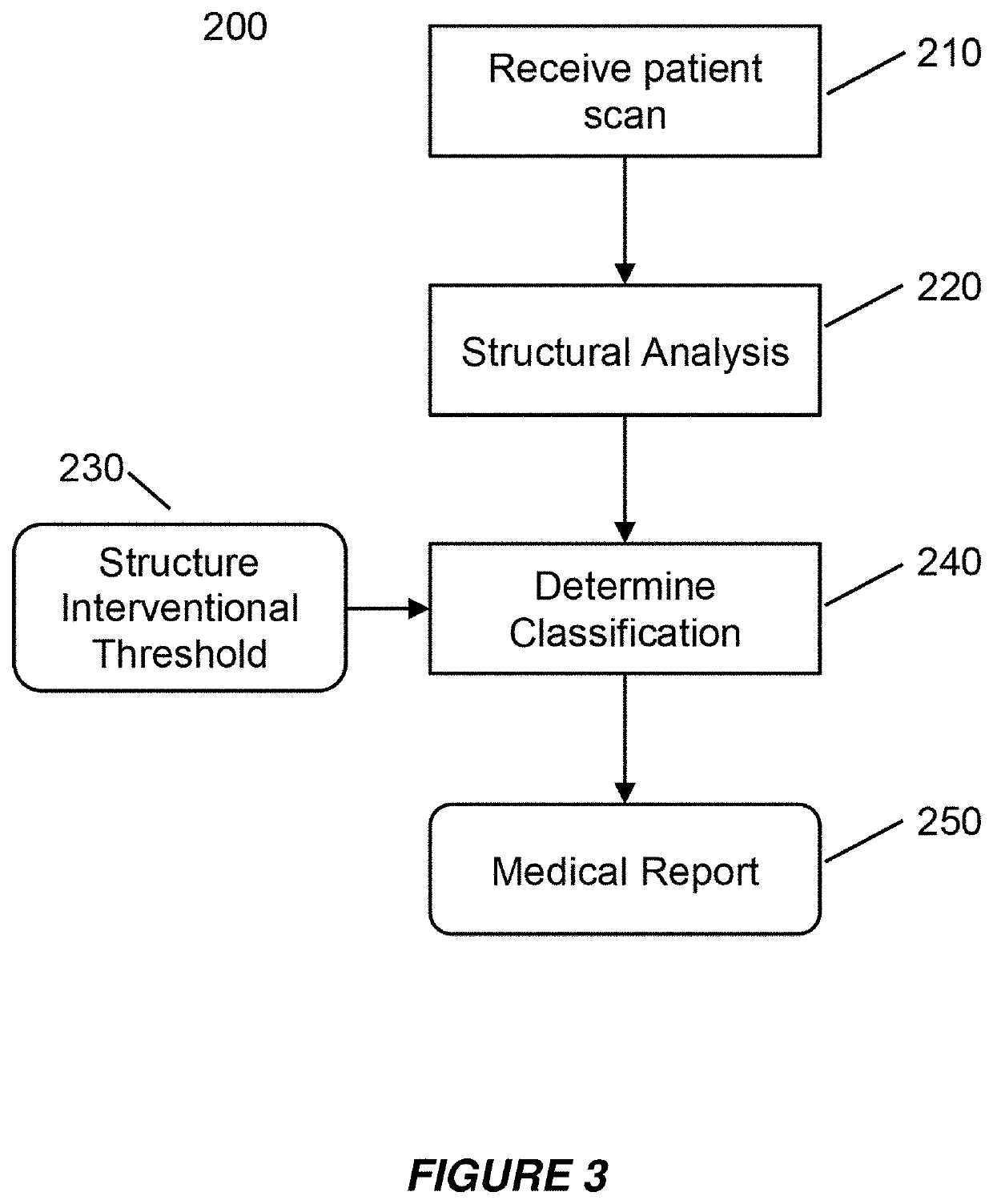Clinical Assessment of Fragile Bone Strength
a fracture risk and clinical assessment technology, applied in the field of diagnosis of osteoporosis and assessment of fracture risk, can solve the problems of inability to use clinically in a consistent or widespread fashion to manage patients, requiring long and expensive fracture-outcome clinical studies, and becoming too expensive or difficult to fulfill. , to achieve the effect of improving the sensitivity of the test, less clinical importance, and convenient clinical us
- Summary
- Abstract
- Description
- Claims
- Application Information
AI Technical Summary
Benefits of technology
Problems solved by technology
Method used
Image
Examples
Embodiment Construction
[0057]Embodiments of the present invention provide a system and method for the use of the results from a structural analysis of a patient's bone from a medical image of a patient's bone or portion thereof, as depicted in FIG. 1, to be used clinically to manage patients. The invention utilizes a comparison of a measurement from this analysis versus an interventional threshold value for fragile-bone-strength to classify a risk of fracture, allowing for more people at high risk of fracture to be identified than would be possible if only a BMD measurement were used. Some embodiments also describe medical reports that can help patients better understand their risk of fracture. The following description is presented to enable one of ordinary skill in the art to make and use the invention and is provided in the context of a patent application and its requirements.
[0058]Various modifications to the preferred embodiments and the generic principles and features described herein will be readil...
PUM
 Login to View More
Login to View More Abstract
Description
Claims
Application Information
 Login to View More
Login to View More - R&D
- Intellectual Property
- Life Sciences
- Materials
- Tech Scout
- Unparalleled Data Quality
- Higher Quality Content
- 60% Fewer Hallucinations
Browse by: Latest US Patents, China's latest patents, Technical Efficacy Thesaurus, Application Domain, Technology Topic, Popular Technical Reports.
© 2025 PatSnap. All rights reserved.Legal|Privacy policy|Modern Slavery Act Transparency Statement|Sitemap|About US| Contact US: help@patsnap.com



